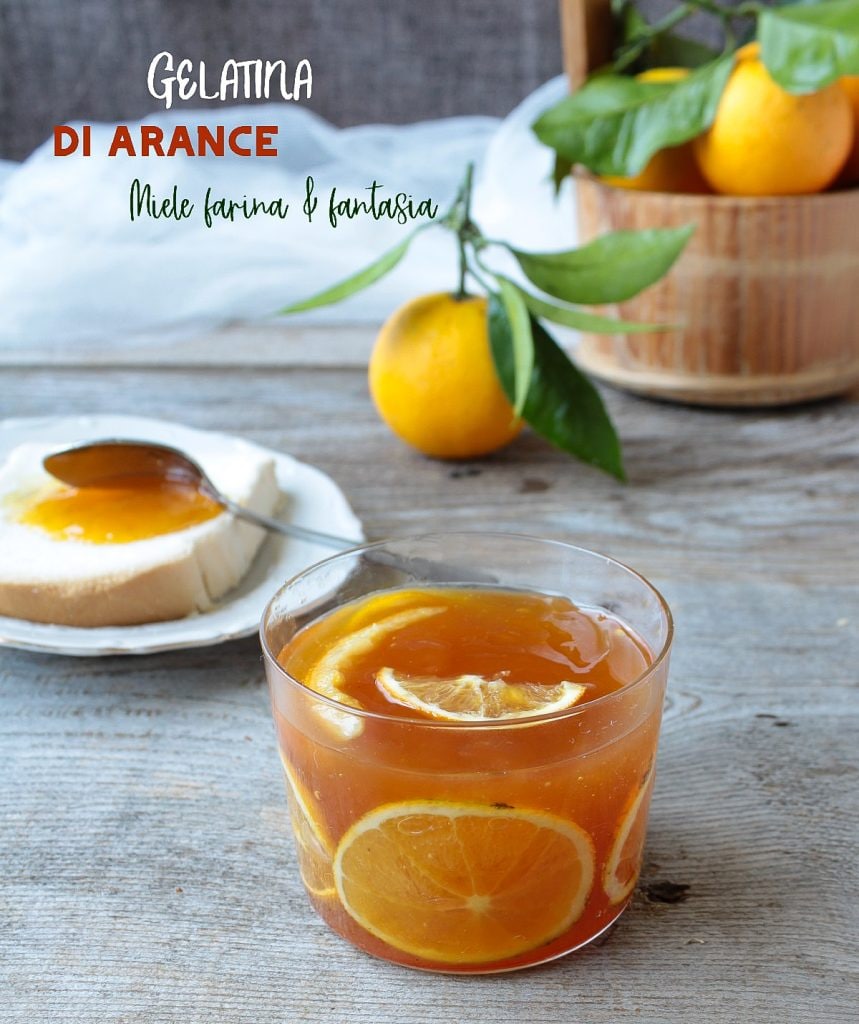Orange jelly is a delicious, very easy, very aromatic, and, above all, versatile preparation. The uses of jelly in the kitchen can vary depending on the consistency we decide to give it. A fluid consistency, more similar to a “sauce,” is suitable for accompanying breakfast, cakes, and ice cream; or roasts, boiled meats, and aged cheeses. A consistency that is firmer or very firm, on the other hand, can be used to fill and decorate desserts or to create well-set decorations. It is entirely made with fresh orange juice and zest and can be pasteurized and stored for a long time just like a preserve. It contains no gluten or lactose or milk proteins.

- Difficulty: Very easy
- Cost: Medium
- Preparation time: 30 Minutes
- Portions: 12 oz
- Cooking methods: Stovetop
- Cuisine: Italian
- Seasonality: Fall, Winter
Ingredients
- 1 2/3 cups freshly squeezed orange juice
- 5.64 oz granulated sugar
- 1/4 tsp fine salt
- zest of 1 orange and 1 lemon
- juice of half a lemon
Steps
Wash and scrub the oranges and the lemon thoroughly.
Remove all the outer peel from one of the oranges and the lemon (make sure to take only the colored part not the white inside which is bitter) which will help thicken the jelly naturally, without adding anything else.
Squeeze the juice from the oranges and half a lemon (the lemon will help maintain the color and further enhance the flavor of the oranges) and pour them well-filtered into a small saucepan.
Add the citrus zest (leaving them whole will make it easier to remove them later), the fine salt, and the sugar and place on the smallest burner over medium heat, with the lid on.
Wait for it to come to a boil, then remove the lid and let it reduce, still over medium heat, stirring very often.
From the moment it boils, count 45 minutes of cooking for a fluid jelly, soft, like a sauce to serve with roasts, cheeses, desserts, and ice creams; if we want it firmer, so it doesn’t run, cook it for 50 minutes (to get a very firm consistency, perfect for decorating with a piping bag, extend the cooking time by just two minutes).
As soon as you turn off the heat, the jelly appears more liquid than it will actually become. As the jelly cools, it will become firmer.
If the jelly has become too dense for your purposes, just dilute it with orange juice added a little at a time, until you get the desired consistency.
Immediately turn off the jelly and pour it immediately into a steel or heat-resistant glass bowl, to prevent it from continuing to cook in the saucepan.
Stir occasionally to cool it down. At the end of cooking, the jelly will have halved the starting amount.
We can use it as soon as it is cold. The jelly is stored in the refrigerator, in a sterilized and well-sealed glass jar, for no more than two days.
An extra idea. When I prepare orange jelly to accompany roasts and cheeses, I also add a crushed clove and a quarter teaspoon of cinnamon flakes to the ingredients listed above, which, in my opinion, gives it an extra spicy note that I really like.
If you have made too much jelly or cannot consume it quickly within a couple of days, you can pour it into an already sterilized jar, fill it to the base of the neck, seal it and proceed with pasteurization.
Place the jar wrapped in a kitchen towel in a pot full of water. From the first boil, lower the heat and let it simmer for 30 minutes. After the time has passed, turn off the heat and let the jar cool without touching it. Once cool, we can dry it and store it in the pantry or in a cool, dry place.

